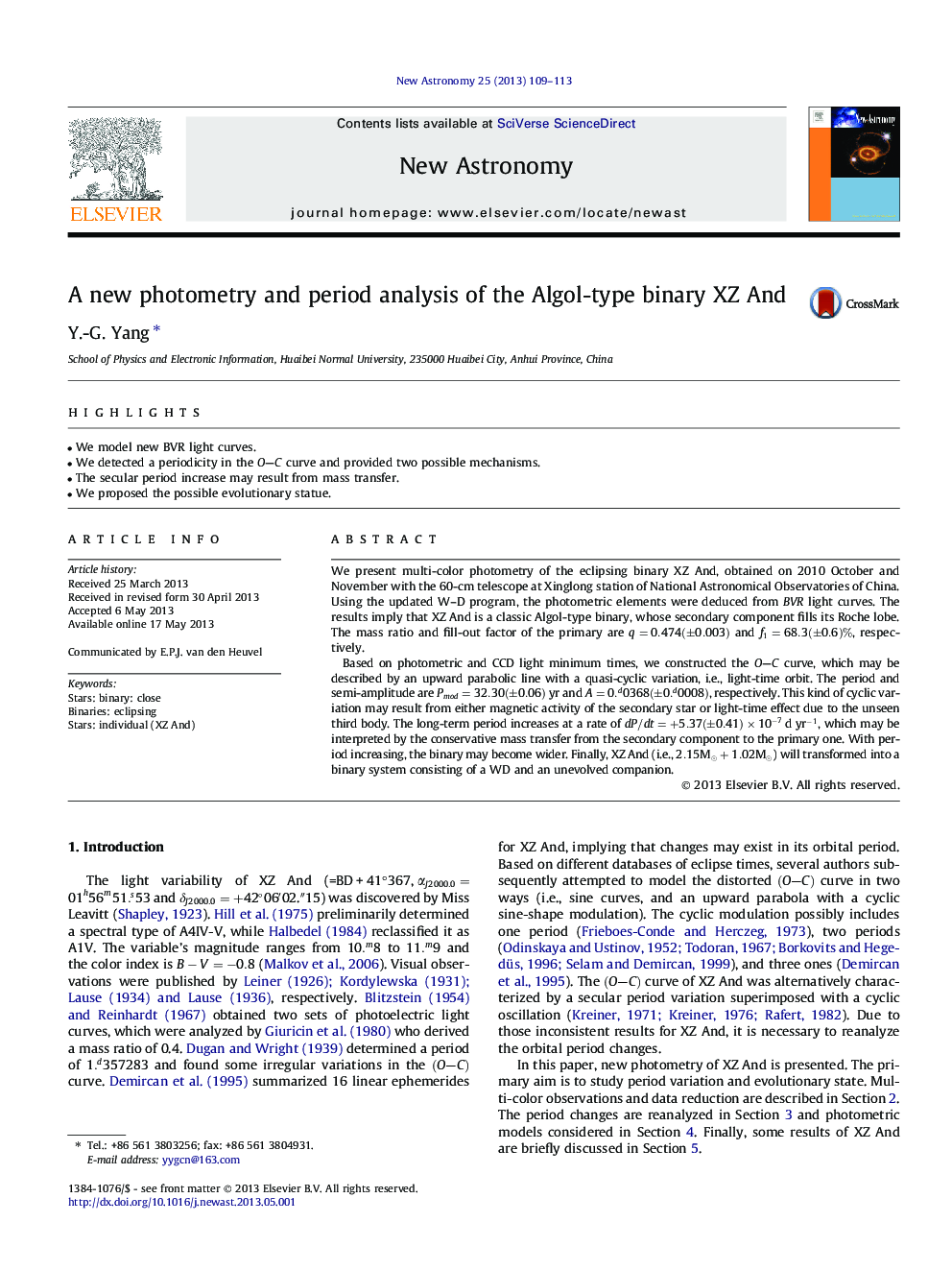| Article ID | Journal | Published Year | Pages | File Type |
|---|---|---|---|---|
| 1779038 | New Astronomy | 2013 | 5 Pages |
•We model new BVR light curves.•We detected a periodicity in the O–CO–C curve and provided two possible mechanisms.•The secular period increase may result from mass transfer.•We proposed the possible evolutionary statue.
We present multi-color photometry of the eclipsing binary XZ And, obtained on 2010 October and November with the 60-cm telescope at Xinglong station of National Astronomical Observatories of China. Using the updated W–D program, the photometric elements were deduced from BVR light curves. The results imply that XZ And is a classic Algol-type binary, whose secondary component fills its Roche lobe. The mass ratio and fill-out factor of the primary are q=0.474(±0.003)q=0.474(±0.003) and f1=68.3(±0.6)%f1=68.3(±0.6)%, respectively.Based on photometric and CCD light minimum times, we constructed the O–CO–C curve, which may be described by an upward parabolic line with a quasi-cyclic variation, i.e., light-time orbit. The period and semi-amplitude are Pmod=32.30(±0.06)yr and A=0.d0368(±0.d0008)A=0.d0368(±0.d0008), respectively. This kind of cyclic variation may result from either magnetic activity of the secondary star or light-time effect due to the unseen third body. The long-term period increases at a rate of dP/dt=+5.37(±0.41)×10-7dyr-1, which may be interpreted by the conservative mass transfer from the secondary component to the primary one. With period increasing, the binary may become wider. Finally, XZ And (i.e., 2.15M⊙+1.02M⊙2.15M⊙+1.02M⊙) will transformed into a binary system consisting of a WD and an unevolved companion.
